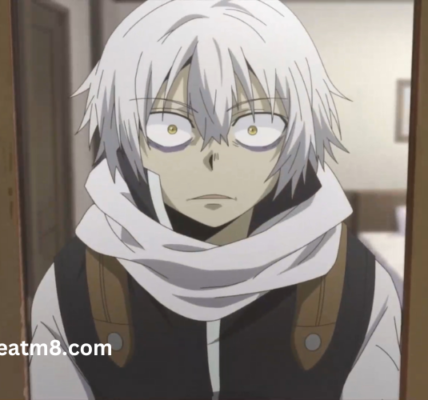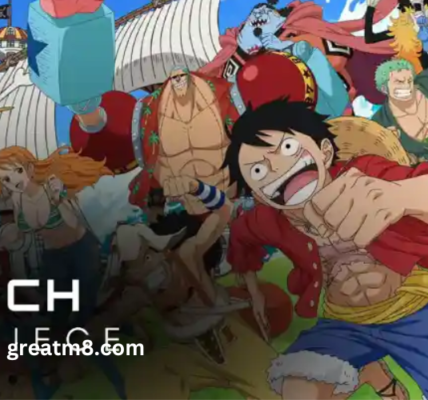Artistry and Innovation in Modern Anime Production
Anime, a form of animation originating from Japan, has evolved into a global phenomenon, influencing and being influenced by cultures worldwide. Its distinctive artistry and innovative production techniques have set it apart from other forms of animation. The journey of anime from its traditional hand-drawn roots to its current state, where cutting-edge technology blends with artistic vision, is a testament to the creativity and ingenuity of its creators. This article explores the artistry and innovation in modern anime production, highlighting how the medium has transformed over the years.
The Evolution of Anime Artistry
Traditional Hand-Drawn Animation
Anime’s roots lie in traditional hand-drawn animation, a painstaking process where each frame is individually crafted by artists. This method, which began in the early 20th century, reached its zenith with classics like “Astro Boy” (1963) and “Akira” (1988). These works showcased intricate character designs, detailed backgrounds, and fluid motion, setting high standards for animation quality.
Hand-drawn animation allowed artists to express their unique styles, giving rise to the diverse visual aesthetics that define its. From the exaggerated features of characters in “Dragon Ball” to the delicate and intricate art of Studio Ghibli films like “My Neighbor Totoro” (1988), traditional animation has been crucial in shaping its artistic identity.
The Digital Revolution
The late 1990s and early 2000s marked a significant shift in this production with the advent of digital technology. This transition was not merely a change in tools but a profound transformation in how it was created. Digital techniques allowed for more efficient production processes, higher consistency in animation quality, and the introduction of new visual effects that were challenging to achieve with traditional methods.
Pioneering works like “Ghost in the Shell” (1995) and “Serial Experiments Lain” (1998) blended traditional animation with digital techniques, pushing the boundaries of what could be visually and thematically achieved in anime. These productions utilized digital tools for backgrounds, special effects, and compositing, creating immersive and visually stunning worlds.
The Role of Technology in Modern Anime
Today, the use of technology in this production is ubiquitous. Software like Adobe Animate, Toon Boom Harmony, and Blender are integral to creating modern anime. These tools facilitate smoother workflows, allowing artists to focus more on creativity and less on the mechanical aspects of animation.
The integration of 3D modeling and CGI (Computer-Generated Imagery) has further expanded the possibilities of this production. Series like “Attack on Titan” and “Land of the Lustrous” demonstrate how CGI can enhance action sequences and create dynamic, visually rich environments. The seamless blend of 2D and 3D animation in these shows exemplifies the innovative spirit driving modern anime.
Innovations in Storytelling and Themes
Complex Narratives and Mature Themes
Modern this is renowned for its complex narratives and mature themes, appealing to a broad audience beyond children and teenagers. Shows like “Death Note” and “Steins;Gate” explore psychological and philosophical concepts, weaving intricate plots that keep viewers engaged and intellectually stimulated.
The ability to tackle mature themes such as existentialism, morality, and identity has allowed anime to resonate deeply with adult audiences. This narrative depth, combined with visual artistry, has positioned anime as a sophisticated form of storytelling capable of exploring profound human experiences.
Genre Blending and Experimentation
Anime’s flexibility as a medium allows for genre blending and experimentation, leading to unique and innovative narratives. Series like “Cowboy Bebop” seamlessly merge science fiction with western and noir elements, creating a distinctive and memorable universe. Similarly, “Neon Genesis Evangelion” combines mecha, psychological drama, and apocalyptic themes, pushing the boundaries of genre conventions.
This willingness to experiment has resulted in some of the most iconic and influential works in the medium, inspiring creators across the globe. The fusion of different genres not only enriches the storytelling but also attracts diverse audiences, further cementing anime’s place in popular culture.
Representation and Inclusivity
Modern anime has also made strides in representation and inclusivity, reflecting a broader range of experiences and identities. Series like “Yuri on Ice” and “Given” portray LGBTQ+ relationships with sensitivity and depth, contributing to greater acceptance and understanding.
Additionally, anime such as “March Comes in Like a Lion” and “A Silent Voice” address issues like mental health and disability, shedding light on important social topics. By tackling these themes, anime not only entertains but also fosters empathy and awareness, making it a powerful medium for social commentary.
The Collaborative Nature of Anime Production
The Role of Studios and Production Committees
Anime production is a highly collaborative process involving numerous studios and production committees. Studios like Studio Ghibli, Madhouse, and Kyoto Animation have become synonymous with quality and innovation, producing some of the most beloved and critically acclaimed anime.
Production committees, which include various stakeholders such as publishers, broadcasters, and merchandise companies, play a crucial role in financing and promoting anime. This collaborative model ensures that diverse perspectives are incorporated into the production process, resulting in well-rounded and engaging works.
International Collaborations and Influence
The global popularity of it has led to increased international collaborations, enriching the medium with diverse influences. Western studios like Netflix and Crunchyroll have invested in original anime productions, contributing to the medium’s growth and innovation.
Collaborations between Japanese and Western creators have resulted in unique projects like “The Animatrix” and “Blade Runner: Black Lotus,” which blend Eastern and Western storytelling and visual styles. These cross-cultural partnerships not only expand its reach but also introduce fresh ideas and perspectives, driving the medium forward.
Fan Contributions and Crowdsourcing
Fans play a significant role in the anime ecosystem, not only as consumers but also as contributors. Fan art, fan fiction, and cosplay are just a few ways in which fans engage with and celebrate their favorite anime.
Crowdsourcing platforms like Kickstarter have enabled fans to directly support anime projects, resulting in successful campaigns for works like “Little Witch Academia” and “Under the Dog.” This direct involvement of fans in the production process highlights the deep connection between creators and audiences, fostering a sense of community and shared passion.
Challenges and Future Prospects
Addressing Industry Struggles
Despite its successes, the this industry faces significant challenges, including labor issues, financial constraints, and intense competition. Animators often work long hours for low pay, leading to concerns about sustainability and the well-being of those who bring anime to life.
Efforts to address these issues include initiatives to improve working conditions and provide better compensation for animators. Additionally, technological advancements such as AI-assisted animation and automation hold promise for reducing the workload and enhancing productivity, potentially alleviating some of the industry’s pressures.
Embracing New Technologies
As technology continues to evolve, so too does its impact on this production. Virtual reality (VR) and augmented reality (AR) offer exciting new possibilities for immersive storytelling, allowing viewers to experience anime in unprecedented ways. Projects like “Sword Art Online: VR” and “Spirited Away VR” hint at the potential for VR to transform its viewing into a fully interactive experience.
Artificial intelligence (AI) is also making its mark, with AI-driven tools aiding in tasks such as inbetweening and coloring. These advancements can streamline production processes, enabling studios to produce high-quality content more efficiently.
The Future of Anime Storytelling
Looking ahead, the future of its storytelling appears bright, with creators continuing to push boundaries and explore new horizons. The increasing diversity of voices and perspectives within the industry promises fresh and innovative narratives that reflect the complexities of the modern world.
As anime continues to evolve, it will likely incorporate even more cutting-edge technologies, blending traditional artistry with digital innovation to create works that are visually stunning and emotionally resonant. The continued collaboration between Japanese and international creators will further enrich the medium, ensuring that anime remains a dynamic and influential force in global entertainment.
Conclusion
The artistry and innovation in modern this production are a testament to the creativity, passion, and ingenuity of its creators. From its traditional hand-drawn roots to its current state of technological sophistication, it has continuously evolved, pushing the boundaries of what is possible in animation and storytelling.
By embracing new technologies, exploring complex themes, and fostering collaboration, the anime industry has created a diverse and vibrant medium that resonates with audiences worldwide. Despite the challenges it faces, the future of its looks promising, with endless possibilities for artistic and narrative innovation. As anime continues to grow and evolve, it will undoubtedly inspire and captivate future generations, solidifying its place as a unique and influential form of artistic expression.









